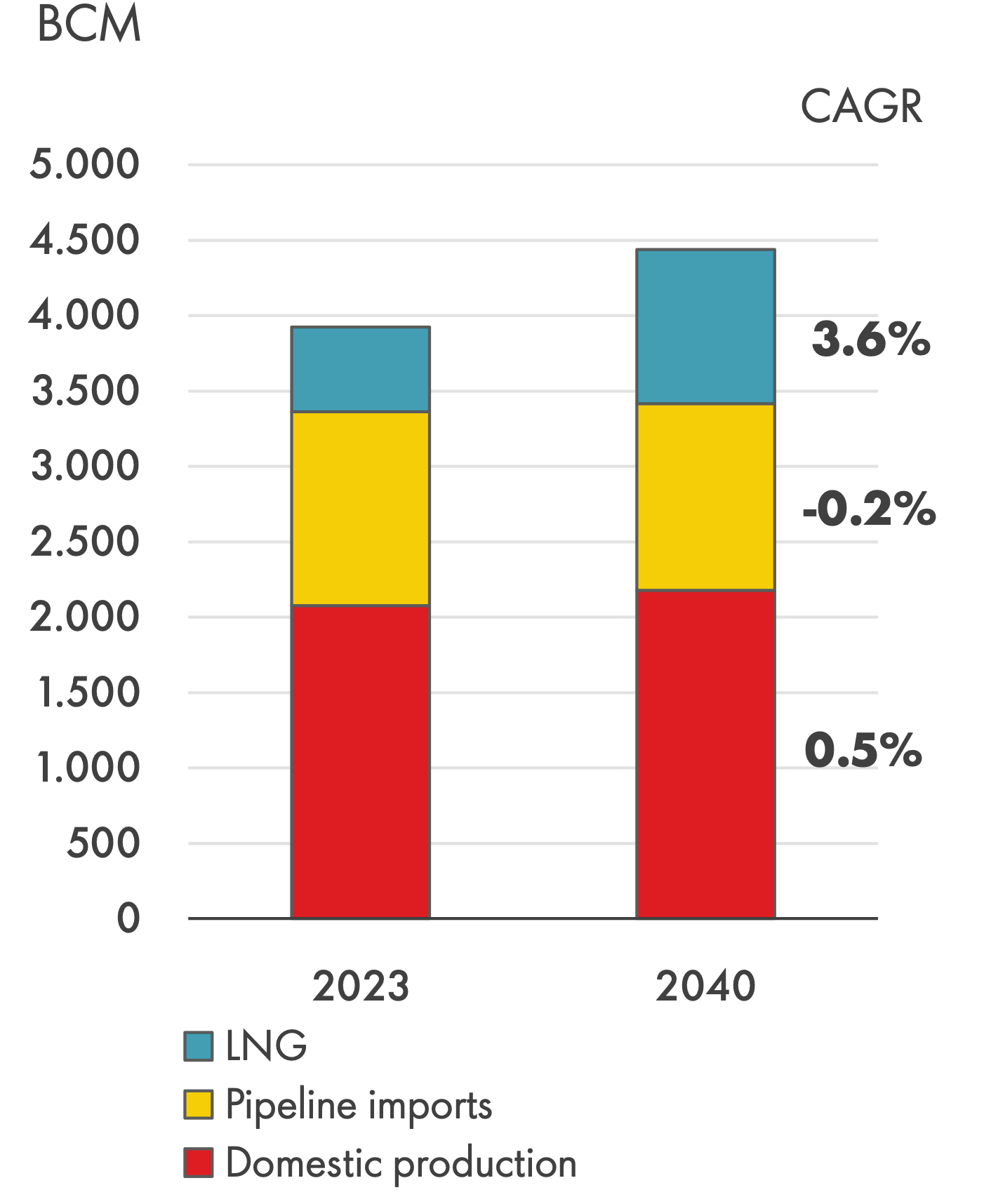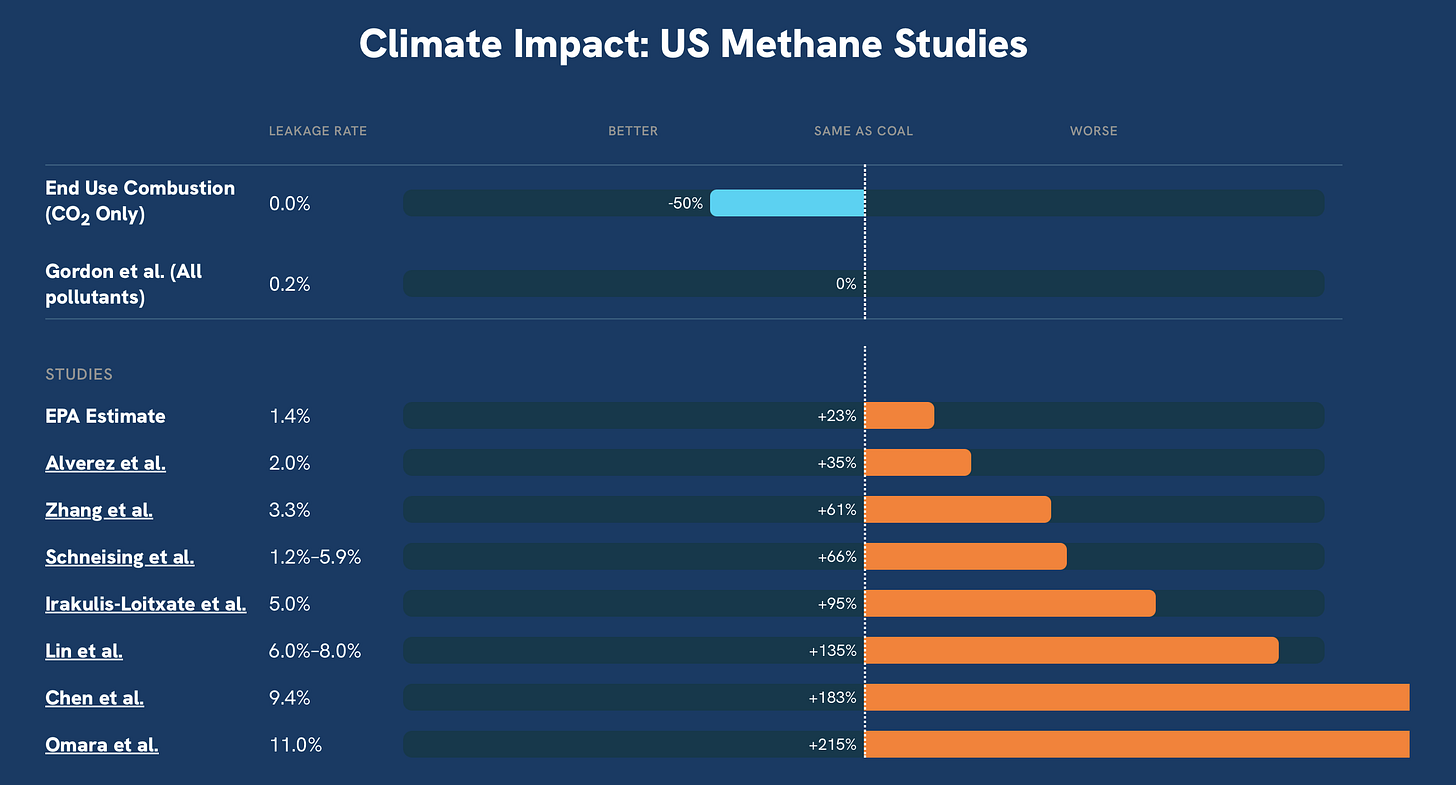Methane Emissions and the Business of Natural Gas
Why sacrificing the bottom line can grow the top line
Issue with methane emissions
Methane, a potent greenhouse gas, has long been overshadowed by carbon dioxide—the primary pollutant from combusting fossil fuels that have powered human civilization since the discovery of fire. This is partly because methane's atmospheric concentration is much lower—about 200 times less than carbon dioxide. Recently, however, methane has gained attention as a standalone near-term threat with the potential to accelerate global warming, worsening it beyond what carbon dioxide alone might cause in the short term. Methane is roughly 80 times more effective than carbon dioxide at trapping heat over a 20-year period.
Despite its potency, methane's impact is primarily a short-term concern. Unlike carbon dioxide, which remains in the atmosphere for thousands of years, methane’s atmospheric lifetime is relatively short—around 9–12 years. As mid-century peak warming approaches, reducing methane emissions could be crucial to avoiding the worst outcomes of climate change. Even in small quantities—and modern civilization is far from tiny in its ability to leave its imprint on nature—methane can have an outsized impact on global temperatures, making it a critical focus for climate action.
Liquefied natural gas (LNG) is natural gas that has been cooled to temperatures below -162°C (-259°F) to convert it into a liquid for easier storage and transport. LNG is important because its use has been growing rapidly. Globally, demand for natural gas is expected to increase largely due to LNG, particularly in Asia. This growth positions LNG not only as a key component of the global energy mix but also as a commodity of geopolitical significance. However, the rise in LNG adoption and the expansion of its global market have also brought concerns about methane leaks into sharper focus.

Although natural gas production and use inherently cause methane leaks—leading some to claim that natural gas is no better than coal in terms of total greenhouse gas emissions—its use as LNG can make the emissions significantly worse. Recent studies suggest that LNG's emissions footprint may even surpass that of coal, the dirtiest fossil fuel currently in use. However, consensus varies on how much worse LNG is, or whether such claims reflect a genuine concern or an environmentalist agenda. One notable study found that LNG is 33% worse than coal in greenhouse gas emissions over a 20-year period and no better than coal over 100 years. This research was influential in the Biden administration's decision to temporarily halt approvals for LNG exports earlier this year.
Conventional wisdom and much of the research over the past two decades have characterized natural gas as a clean-burning fuel, emitting significantly less carbon dioxide than coal. This perception underpins the global shift from coal to natural gas. However, claims that LNG is dirtier than coal challenge this belief, raising questions about the true environmental impact of natural gas.
The problem lies in the scope of earlier research, which primarily focused on carbon dioxide emissions from burning fuels while overlooking methane leaks throughout the natural gas lifecycle—from extraction and processing to transportation and final use.

